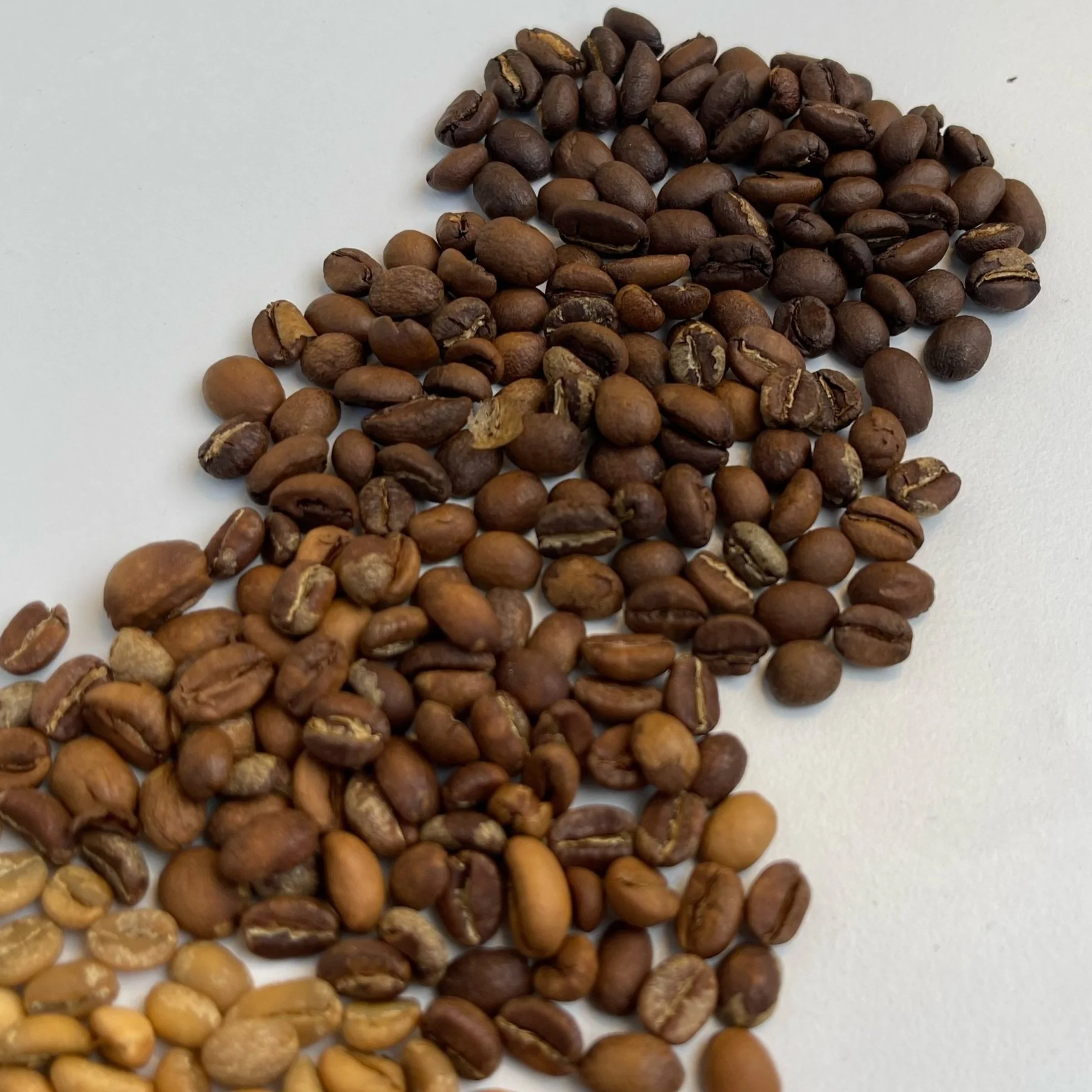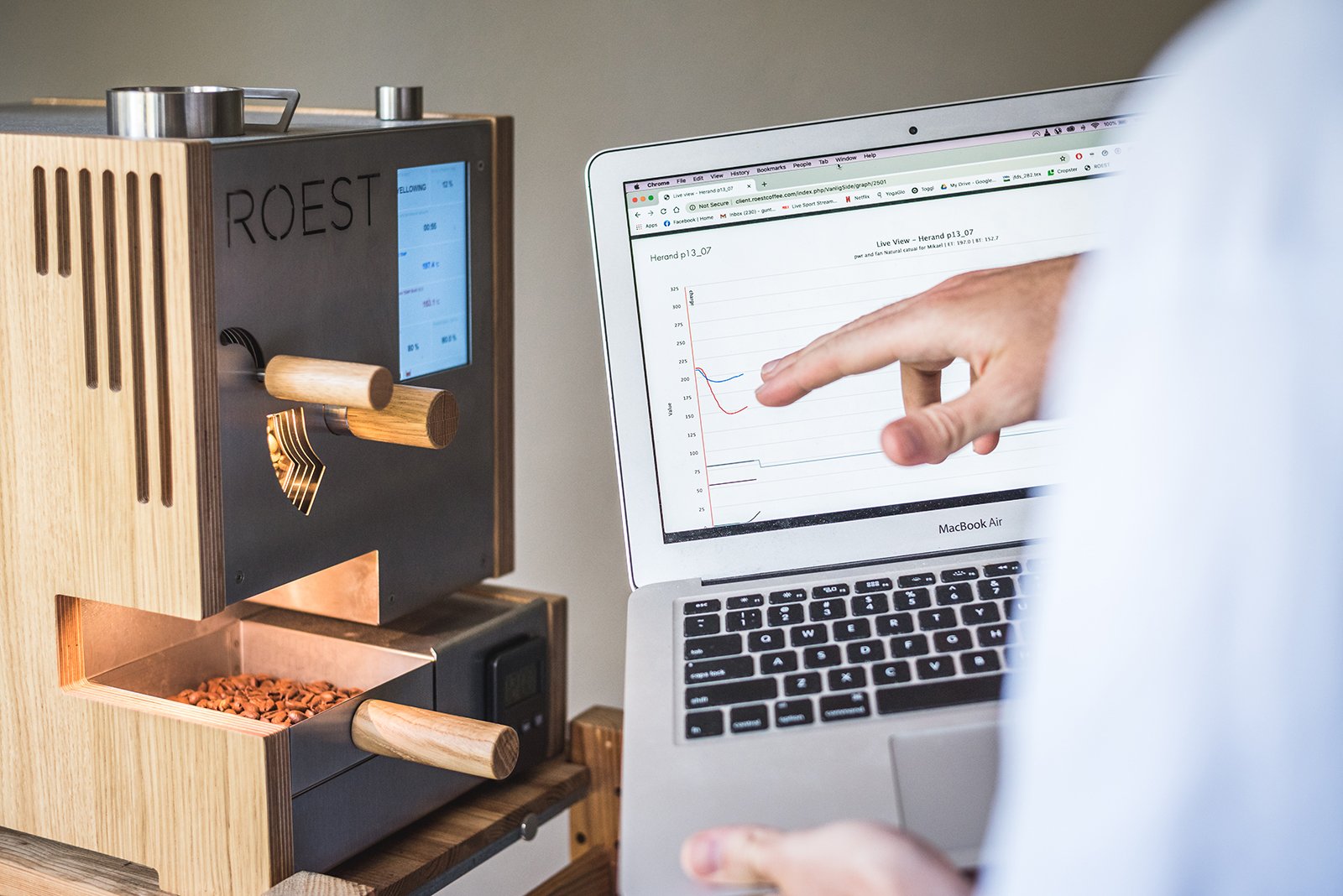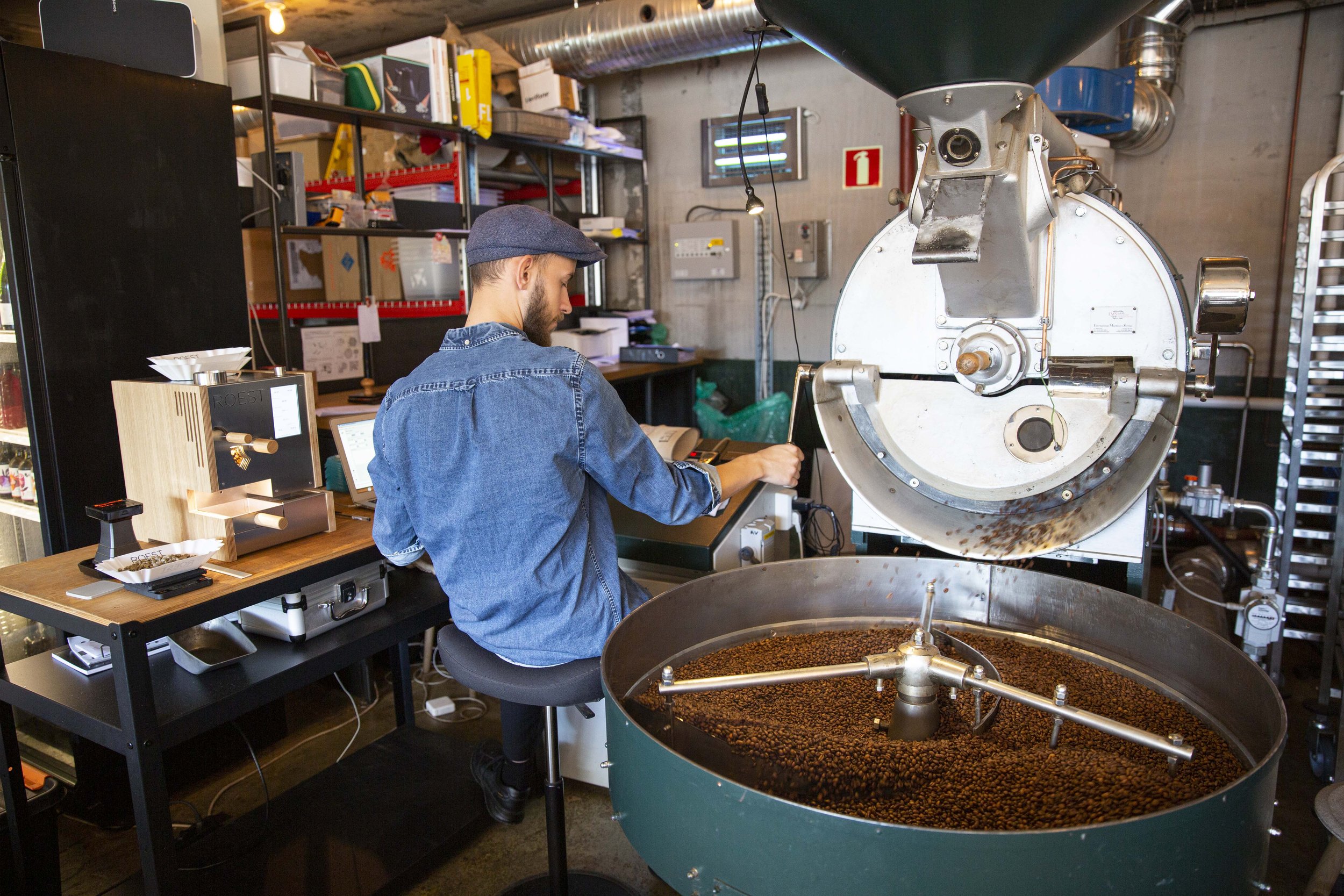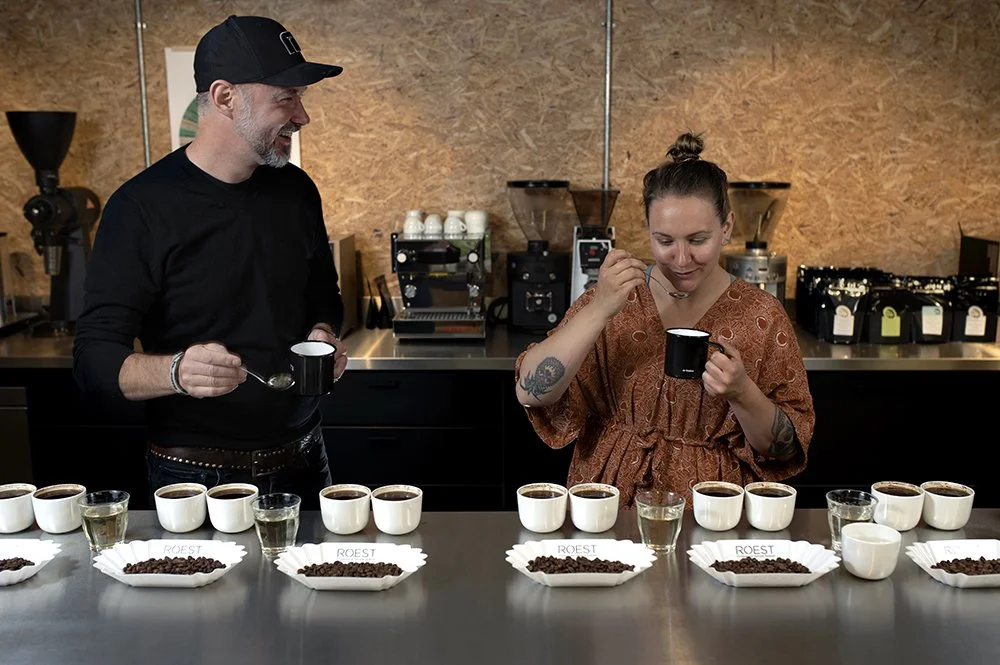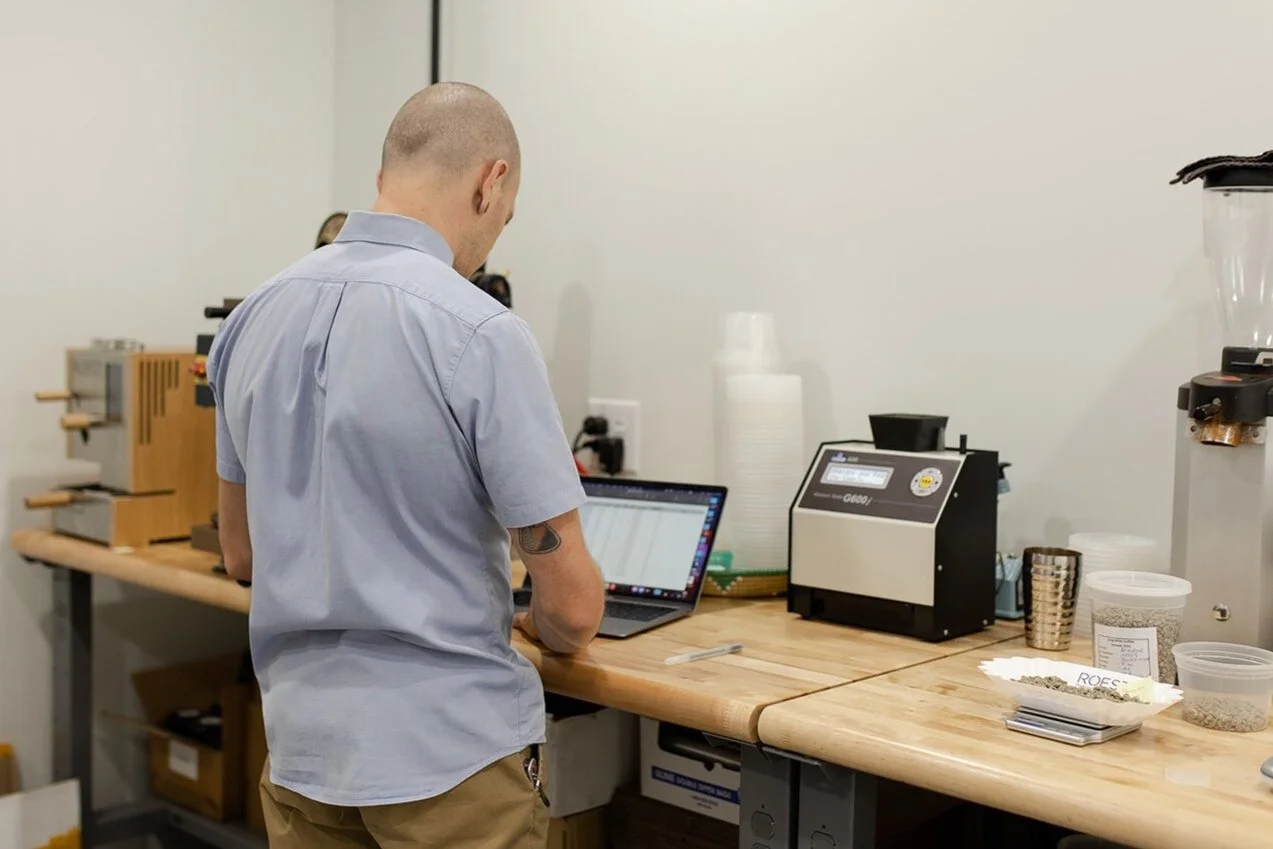Data Collection for Coffee Roasters - Why is it important?
Whether you own a coffee shop, roastery, or you are an independent distributor - collecting data is crucial to improve the quality of coffee, workflow efficiency, and increase profits. Fortunately, today’s roasting technology and specialized software make it easier for anyone to manage.
Now you might wonder - what should I collect and why? Where should I save the data for future use? No worries, let’s go through it together! In this article, we’ll take a closer look at the importance of collecting data of First Crack, temperature sensors, and the best way to save all this information.
Collecting First Crack data
First Crack is a cracking sound that occurs when the beans enter an exothermic reaction, usually at about 196°C (385°F). At this stage, they expand and release built-up energy, steam, and carbon dioxide (CO2) that forces the beans to crack open. The coffee will also double in size and shed most of its silverskin.
Why is this event so important?
First Crack is commonly used to indicate roasting degree - letting the roaster know that the coffee has reached the beginning stages of “light roast.” Therefore, it’s a vital part of the aroma and flavor development.
Want to learn more? Read about the different development stages of coffee roasting:
With First Crack being such a crucial factor, it’s needless to say that the event should be registered. Collecting this data will help you better understand what’s happening to the coffee, giving you better control over the roast and the flavor profile. It’s beneficial when roasting a new coffee, as you’ll quickly understand how it reacts and develops during the roast. You can also use this data for the next batch to prepare yourself for the event to achieve consistency.
However, registering First Crack might not always be easy, and stay 100% attentive during every roasting session. In addition, the crack does not always occur when expected. There are several explanations for why this could happen; for example, your starting temperature or environmental conditions might differ from when you did the reference roast.
ROEST Sample Roasters automatically detects First Crack and its intensity.
Thankfully, Artificial Intelligence (AI) 's expanding role in coffee roasting equipment and software makes it easier for roasters to predict and register First Crack. This is an excellent solution for those in need of improving their First Crack accuracy for better coffee!
Essential temperature sensors
You can collect a remarkable amount of data from temperature sensors. Let’s look at some of the most common sensors (bean, air, exhaust, and drum) to see what they measure and how they can help you.
Bean Temperature
In short, the bean temperature is used to find out what’s happening during your roast, why it’s happening, and when.
Observe as the beans get exposed to the heat, and the bean temperature starts to increase - creating an upward slope in the roasting graph. This is called the turning point and is when the fun begins. The color of the coffee starts to change from green to yellow, reaching the end of the drying phase and the start of the Maillard reaction.
Turning point displayed on ROEST’s live view.
What is the Maillard reaction? It’s a chemical reaction between amino acids and carbohydrates, which causes a diverse range of colors, aromas, and flavors. In essence, it transforms the beans into an aromatic and flavorful coffee.
During this stage, the bean temperature will lend you a hand. Now that you know when the First Crack typically occurs (around 196°C/385°F), you can track the bean temperature and tweak temperatures accordingly to change the length of the Maillard reaction. Why would you want to change the length? Well, that’s because a simple change can have an incredible impact on the final result. For example, a coffee spent in a longer Maillard reaction can gain more viscosity, and a coffee spent in a shorter response will turn more sweet and acidic.
Keep in mind that you should also be observing the RoR (rate of rise). The RoR indicates how many degrees per minute the temperature increases and can give you an insight into how the bean temperature curve will behave. For example, you can see that after the First Crack event, RoR usually decreases and the increase in the bean temperature follows as it shows a flatter slope towards the end of the roast. Observing RoR throughout the roast can help you prepare for what you should do next.
The bean temperature can ensure that everything is going according to the plan.
Seek inspiration from roasting profiles created by coffee professionals all around the world:
Air Temperature
The air temperature measures the beans inside the roasting chamber or drum, corresponding to the amount of convective heat energy you have available.
It also works in correlation with the bean temperature, as a higher air temperature rate (blue line) will lead to a higher bean temperature (red line).
Therefore, a sudden drop in the air temperature results from losing convective heat. If you experience this, we would suggest increasing the airflow or convection energy to create adequate heat transfer to pull the bean temperature.
The goal is to balance these two temperatures and create an optimal flow when adjusting airflow.
Exhaust Temperature
This temperature measures the heat energy in the airflow exiting the roasting chamber. More specifically, it is the remaining heat energy input in the roasting mass, and collecting this data will help you understand what’s happening with the heat transfer.
Together with the bean temperature, you can see how the RoR changes when the difference between the two temperatures becomes more significant. This increases the RoR.
Drum Temperature
The drum temperature refers to the internal temperature of the roasting drum when the beans are added. It is mainly used to calibrate the beginning of the roast. Now, this might not sound important to analyze. However, it can significantly impact the entire roast process and the result.
For instance, when the temperature is too low, it slows down the roast and prevents proper flavor development. This happens because it takes too long to generate the energy needed and results in a coffee with a distinctive flat flavor, known as “baked” coffee. However, if you’re trying to reduce acidity, a lower charge temperature would be ideal.
On the contrary, when the temperature is too high, the beans get “scorched” - burnt on the outside and uncooked on the inside. This leads to a dry and astringent flavor.
So how do you decide on a drum temperature? We would suggest adjusting it according to the air temperature and considering that a higher drum temperature equals higher RoR (Rate of Rise) in the early stages of the roast. It is also essential to decide on a charge temperature based on your roaster, location of temperature probes, your roasting environment, and type of coffee.
Improving your coffee with sensors
Collecting data from temperature sensors can help improve your coffee business.
A better working environment
Temperature sensors, controllers, and alarms have contributed to reducing stress while roasting and increased efficiency, allowing workers to multitask during the roasting sessions.
Getting to know the coffee
Collecting data from temperature sensors is a great way to understand better your coffee and how it reacts when roasting. By analyzing, for example, Bean Temperature and Air Temperature in the early stages, you can see if there’s enough momentum to carry the roast through First Crack and if the roast is stalling (roasted too long without reaching FC) - in that case, will lead to bland and dull flavors. In short, you can learn from the data and tweak temperatures accordingly for the next roast.
Training employees
Providing temperature measurements is extremely helpful when training new employees to help them better understand the roast and its development. The measures can also be valuable for roastmasters when experimenting for better quality.
Consistency
Many roasters get their hands on temperature sensors for one main reason: consistency. If you are a roaster yourself, you can probably relate to the struggle of achieving consistent roasts. However, accurate measurements from temperature sensors will no longer be a problem.
By recording temperatures during the roast - also known as creating a roast graph, you will be able to recreate the same roast later on by looking at the log and applying the same settings. All in all, it’s a key element to achieving consistent roasts and, therefore, a valuable tool for any roaster business.
Where should I save my data?
There are numerous variables you need to consider when creating the perfect roast. Everything from temperature, airflow, RPM, duration, and more is essential to measure to reach the coffee's full potential. However, as you keep experimenting and discovering new information and methods, it might become difficult to keep track of all variables of every roast. Using roasting software to collect data can help your business improve significantly.
Proper roasting software allows you to record and save all your sessions. You can analyze your data afterward, alter profiles your way, save for future sessions and use them as a reference. The best part? Not only will it help you repeat roasting techniques for consistent roasting, but it will also help your teammates and your business. With this data comes the ability to share profiles and repeat roasts among your team without sacrificing quality or efficiency. It’s an incredible way to improve production consistency, especially for less experienced staff.
Many excellent roasting software is available today, such as Cropster and Artisan - two software favored by many roasters. However, it is essential to focus on what you need the most and feel comfortable working with when choosing software. We suggest researching to find one that suits your own needs.
Tracking roasts and collecting data is the key to improving your coffee.
By analyzing data of First Crack and temperature measurements, you’ll find yourself learning more about the coffee, its behavior, and how to create the perfect roast. Above all, collecting data allows you to refer to previous roasts and replicate the process, making consistency a worry of the past!
When a roasting software is making it so easy to collect, why not take this as an opportunity to improve your business?
Enjoyed this? Then check out our article; Roasting coffee for research.


